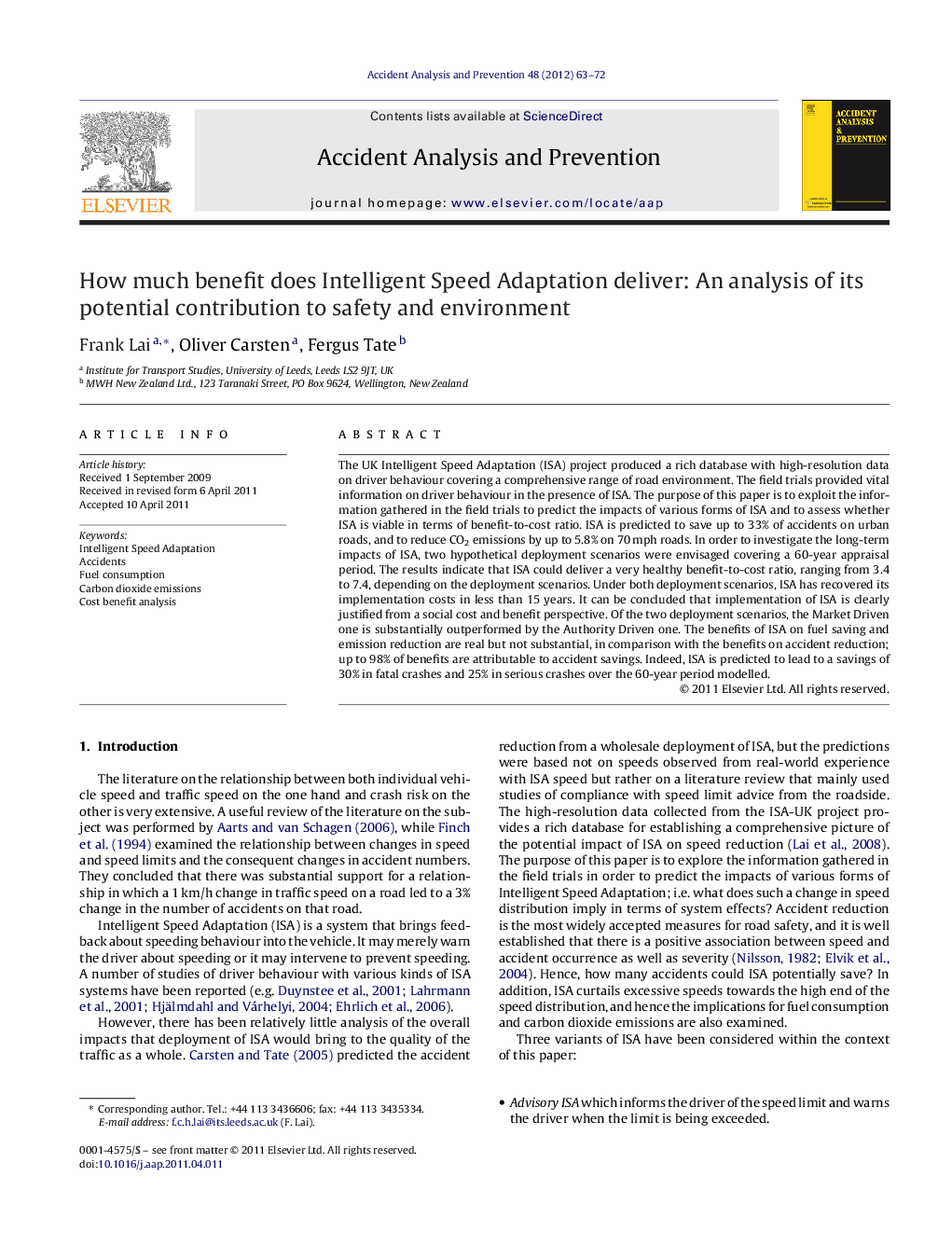| Article ID | Journal | Published Year | Pages | File Type |
|---|---|---|---|---|
| 572574 | Accident Analysis & Prevention | 2012 | 10 Pages |
The UK Intelligent Speed Adaptation (ISA) project produced a rich database with high-resolution data on driver behaviour covering a comprehensive range of road environment. The field trials provided vital information on driver behaviour in the presence of ISA. The purpose of this paper is to exploit the information gathered in the field trials to predict the impacts of various forms of ISA and to assess whether ISA is viable in terms of benefit-to-cost ratio. ISA is predicted to save up to 33% of accidents on urban roads, and to reduce CO2 emissions by up to 5.8% on 70 mph roads. In order to investigate the long-term impacts of ISA, two hypothetical deployment scenarios were envisaged covering a 60-year appraisal period. The results indicate that ISA could deliver a very healthy benefit-to-cost ratio, ranging from 3.4 to 7.4, depending on the deployment scenarios. Under both deployment scenarios, ISA has recovered its implementation costs in less than 15 years. It can be concluded that implementation of ISA is clearly justified from a social cost and benefit perspective. Of the two deployment scenarios, the Market Driven one is substantially outperformed by the Authority Driven one. The benefits of ISA on fuel saving and emission reduction are real but not substantial, in comparison with the benefits on accident reduction; up to 98% of benefits are attributable to accident savings. Indeed, ISA is predicted to lead to a savings of 30% in fatal crashes and 25% in serious crashes over the 60-year period modelled.
► This study assesses the potential of ISA on reduction in accidents and CO2 emissions. ► ISA could reduce 33% accidents on urban roads and 5.8% CO2 emissions on 70 mph roads. ► ISA could deliver a very healthy benefit-to-cost ratio ranging from 3.4 to 7.4. ► 98% of benefits of ISA are attributable to accident savings over the appraisal period. ► The impact of ISA is increased by more rapid introduction of intervening forms.
